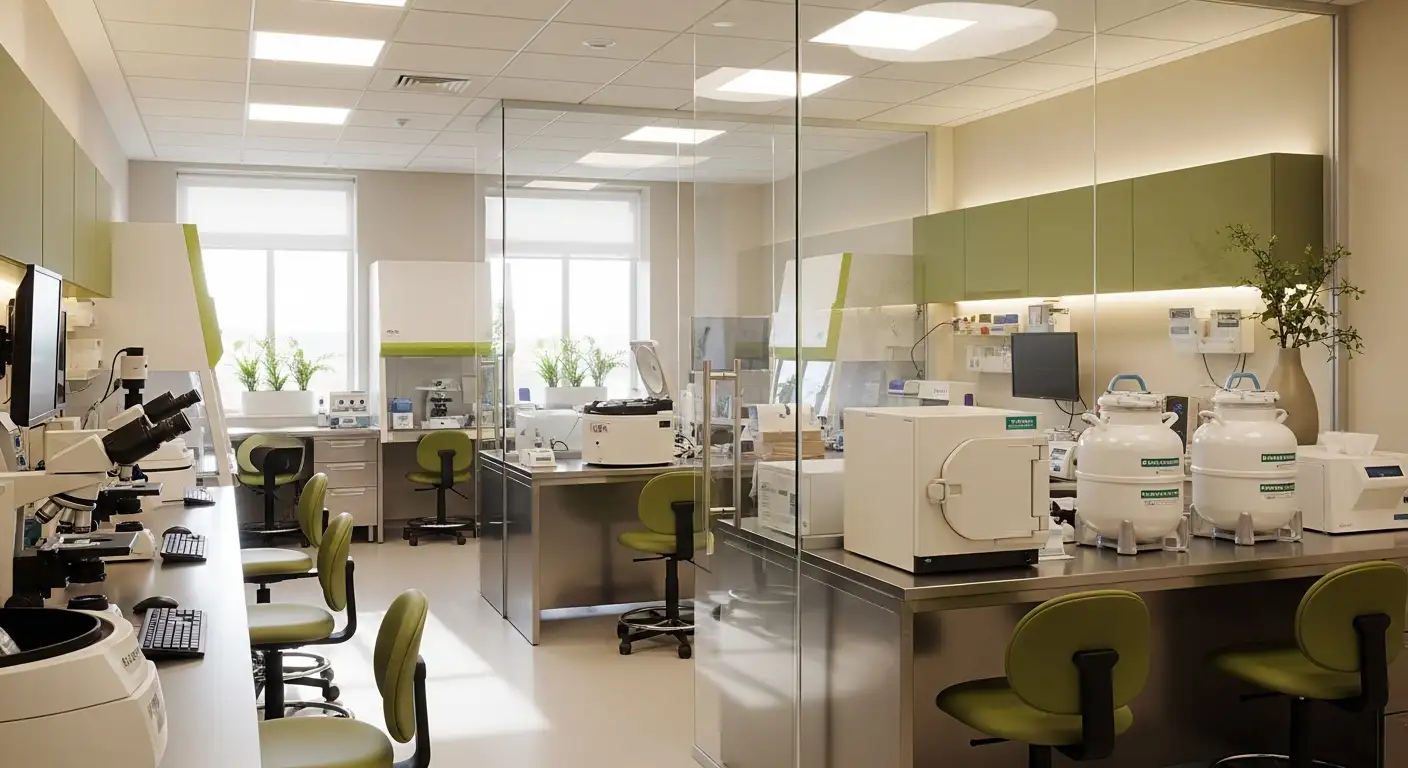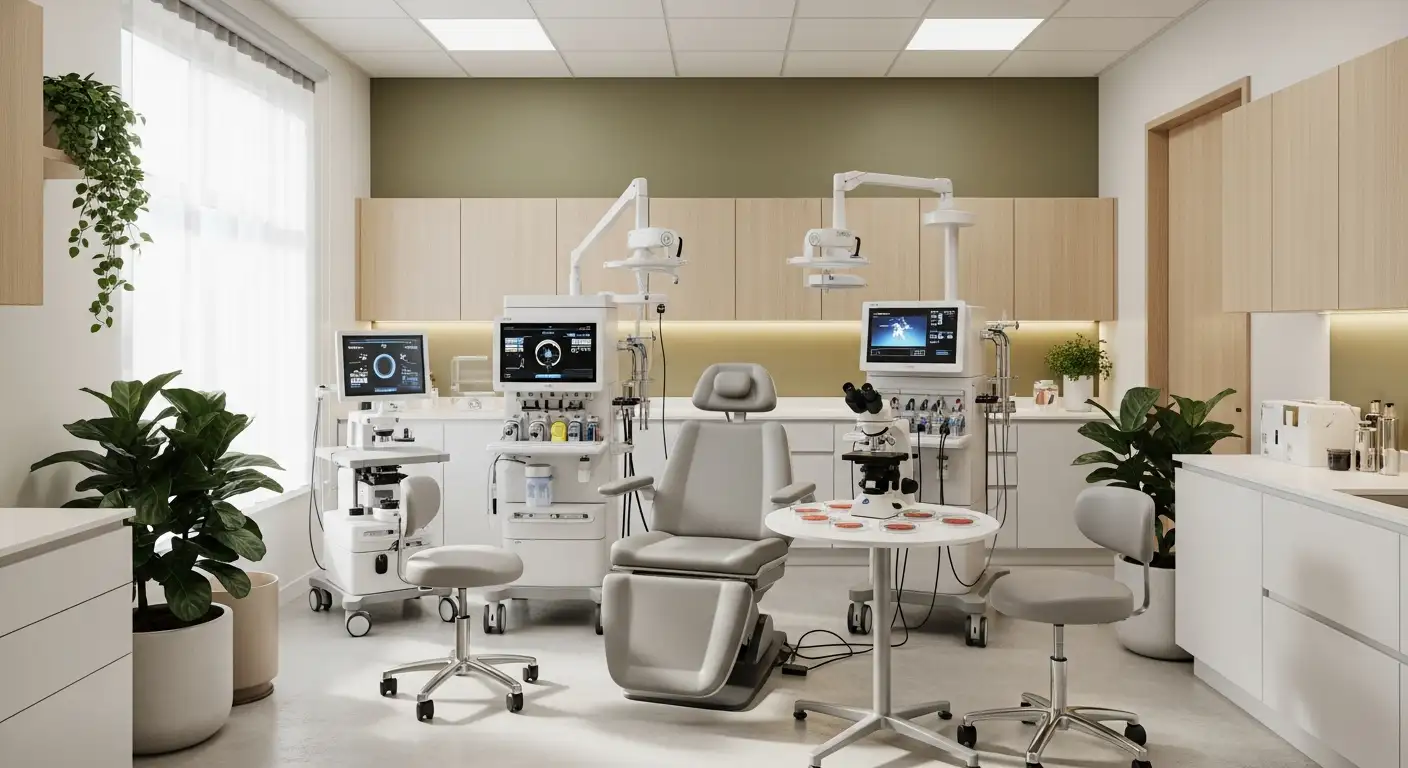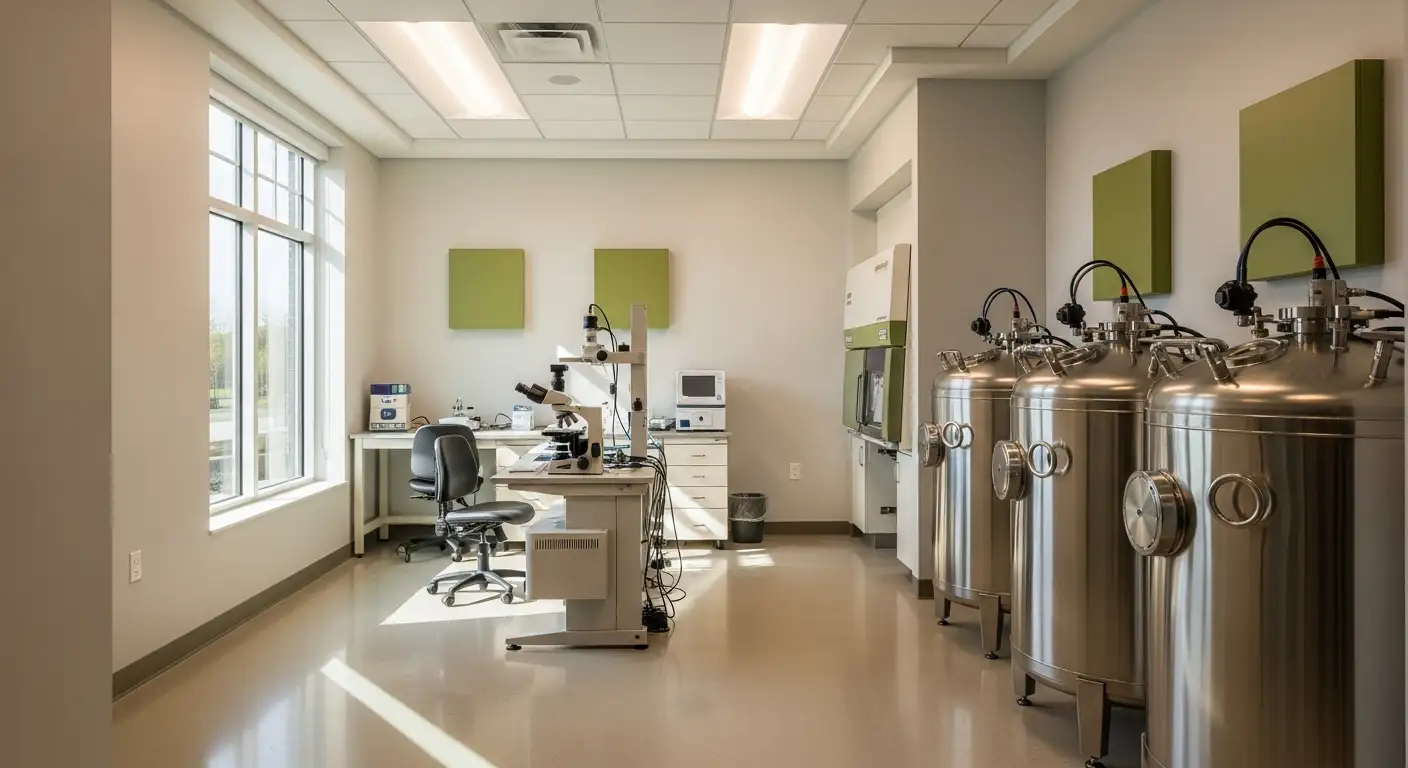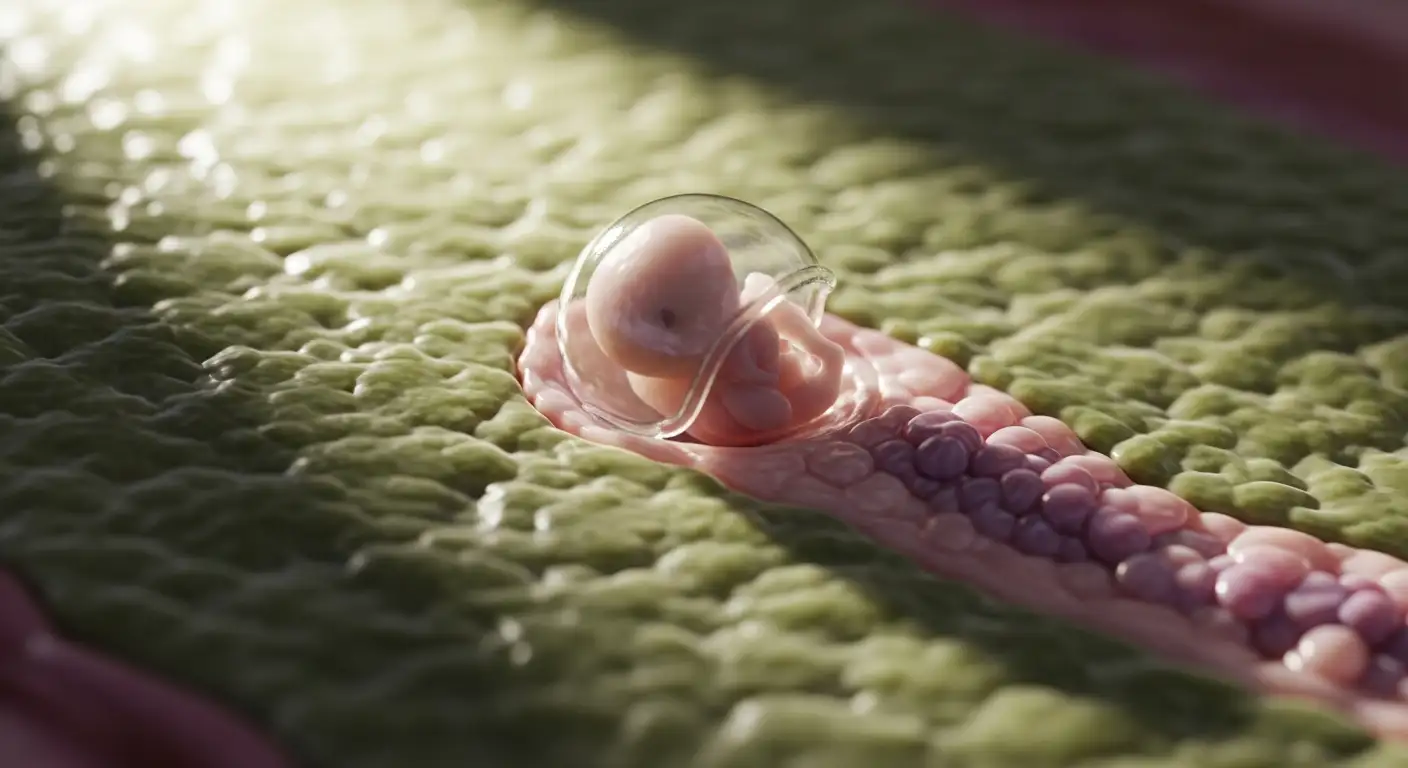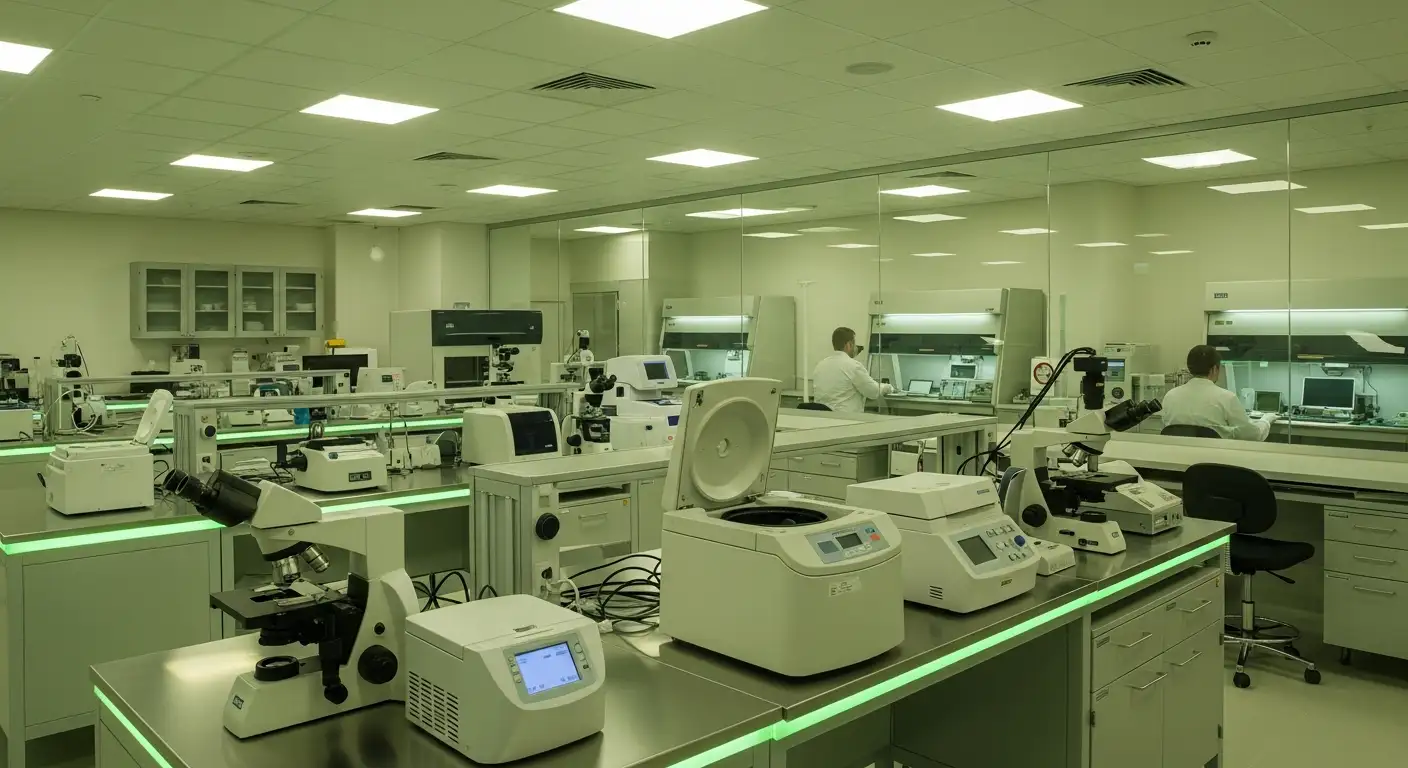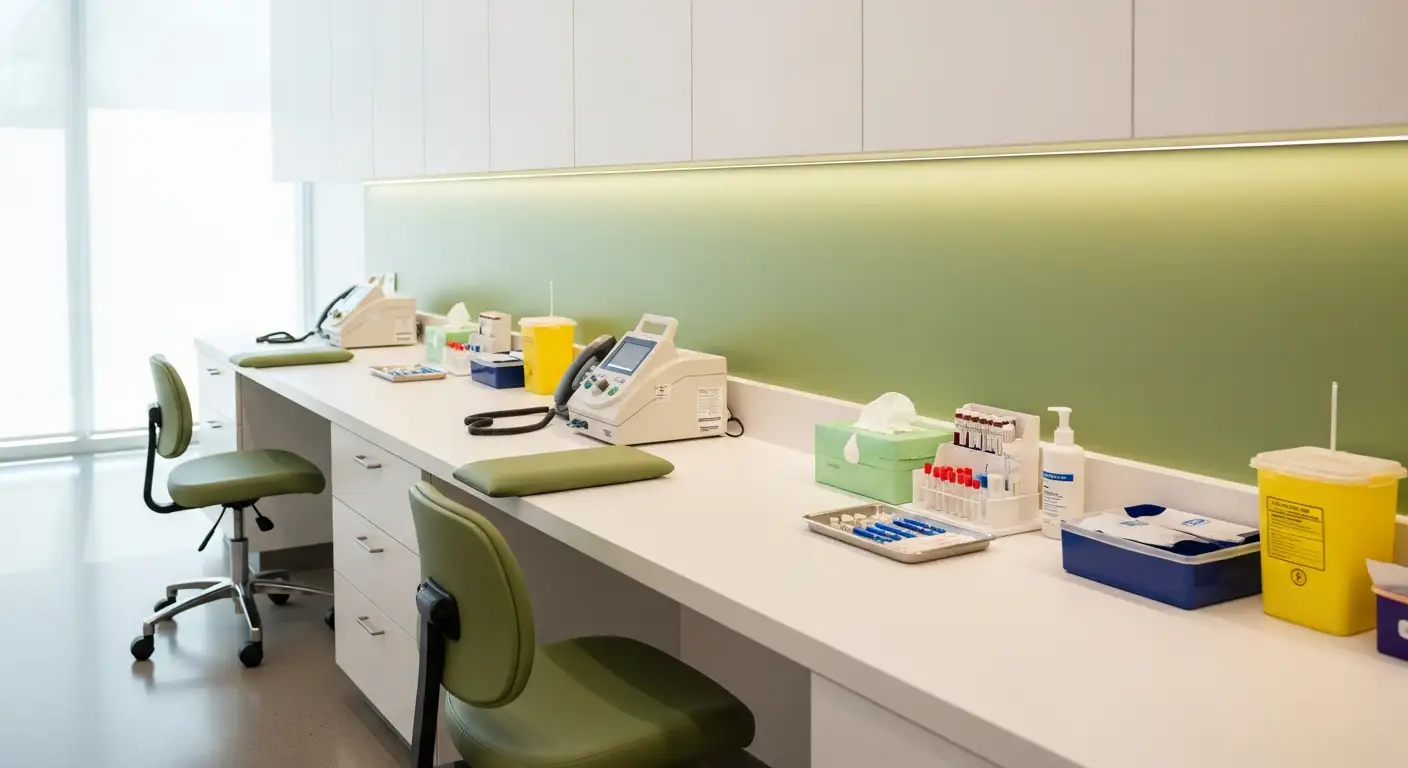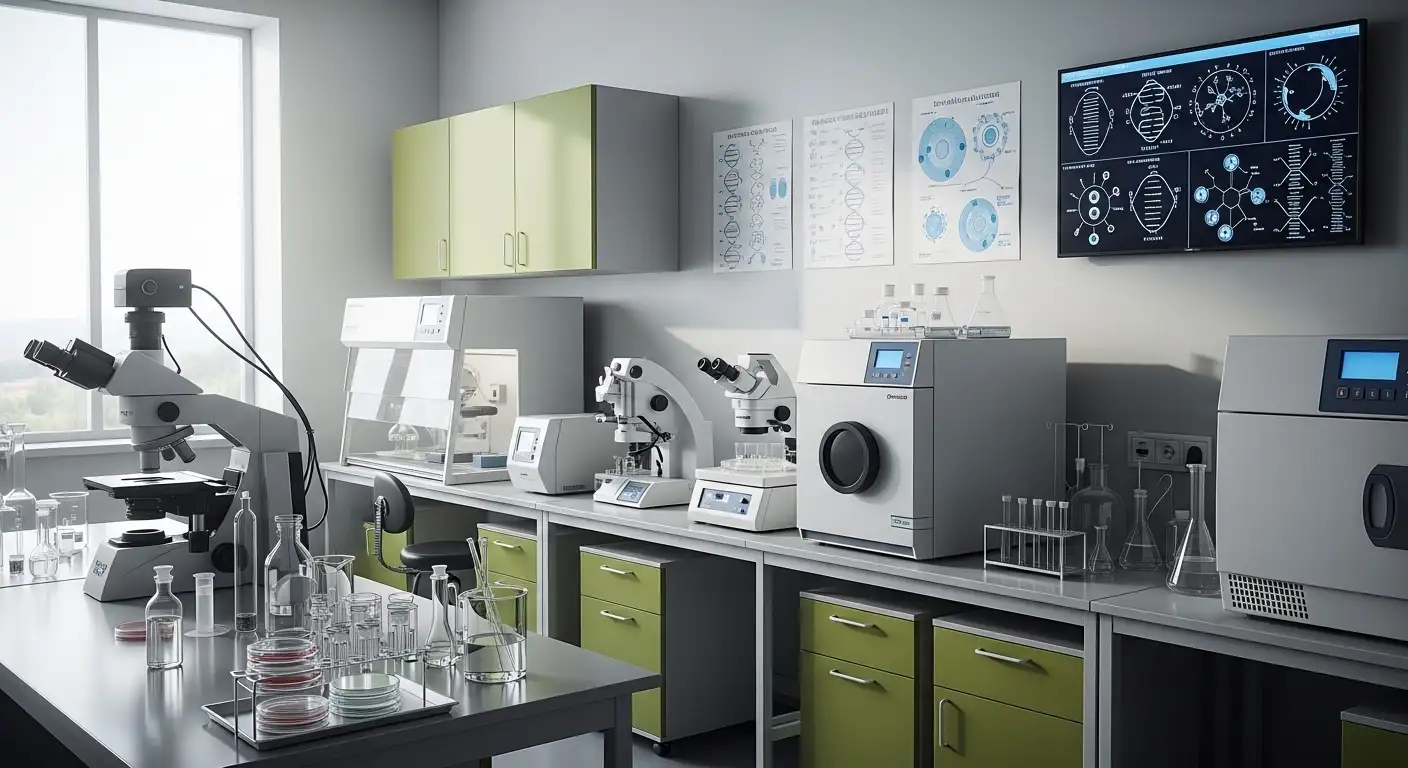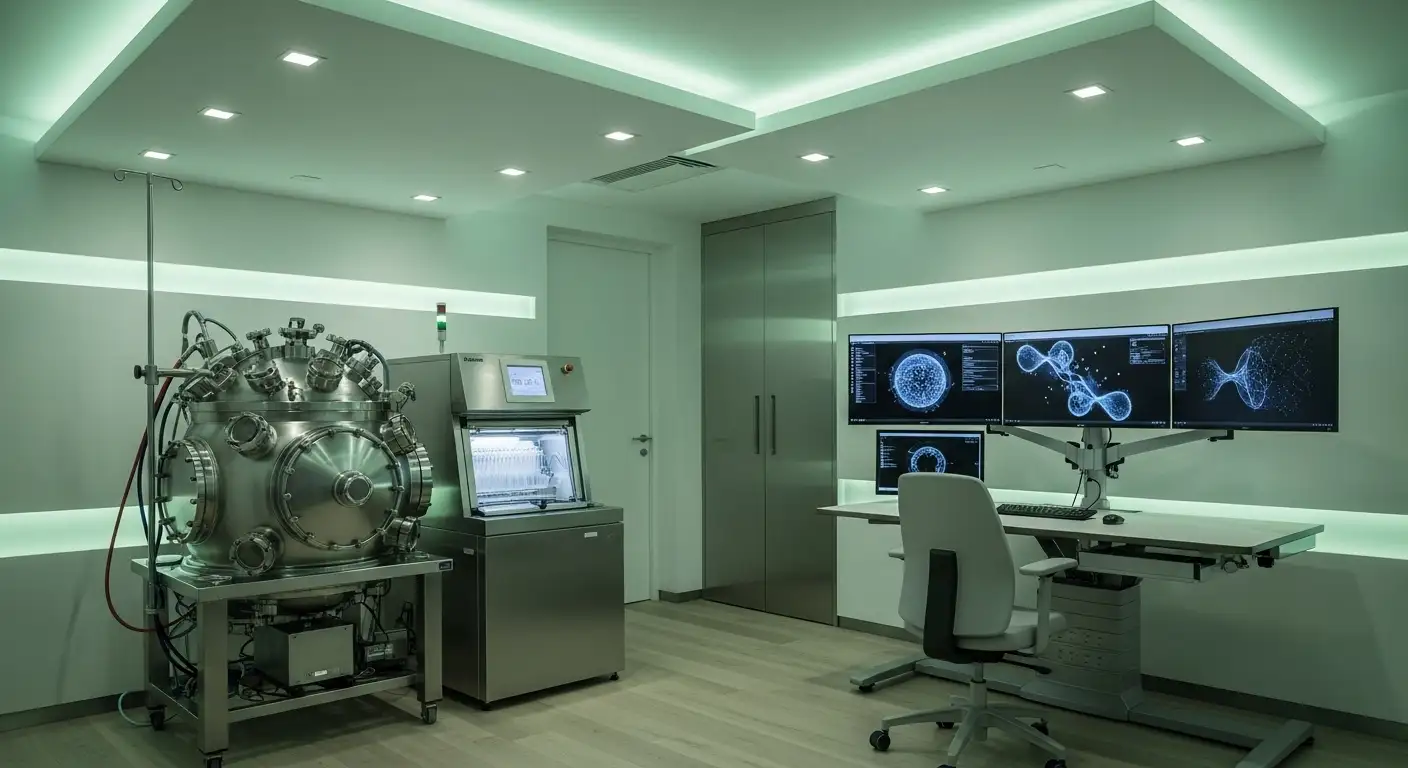What is ovarian reserve and how is it measured?
Understanding Ovarian Reserve: The Key to Fertility Assessment

Introduction to Ovarian Reserve
Ovarian reserve is a crucial concept in reproductive health, referring to the number and quality of a woman's remaining eggs. This reserve directly influences fertility potential and informs how individuals or couples approach conception and fertility treatments. Understanding what ovarian reserve means and how it is measured provides valuable insights into reproductive planning, especially in the context of assisted reproductive technologies (ART). This article unpacks the definition, markers, and clinical use of ovarian reserve testing and explores how current methods help guide fertility decisions.
Defining Ovarian Reserve and Its Clinical Significance

What is ovarian reserve?
Ovarian reserve refers to the number of oocytes, or eggs, remaining in a woman’s ovaries at any given point. This measure reflects both the quantity of eggs and indirectly hints at their quality, both crucial for fertility potential.
Biological basis of ovarian reserve
Women start life with about 6 to 7 million eggs in the fetal stage, which drastically decrease to about 1 to 2 million at birth. By puberty, only 300,000 to 400,000 eggs remain. This reserve continues to shrink with age — approximately 12% remains by age 30 and just 3% by age 40, leading to near depletion at menopause. The eggs' declining number and quality impact natural conception and responses to fertility treatments.
Importance in fertility and reproductive health
Understanding ovarian reserve helps gauge a woman's reproductive lifespan and aids fertility planning. It is an important factor when considering fertility treatments like IVF, as it predicts ovarian response to stimulation. However, ovarian reserve tests mainly estimate egg quantity; they cannot definitively predict natural fertility or pregnancy success. Thus, ovarian reserve is a vital but partial indicator within broader reproductive health assessments.
Markers of Ovarian Reserve: Hormonal and Ultrasonographic Indicators

How is ovarian reserve measured?
Ovarian reserve is assessed through a combination of biochemical and ultrasound-based tests that estimate the remaining number of eggs and ovarian function.
Key biochemical markers
- Follicle-Stimulating Hormone (FSH): Measured typically on cycle day 3, elevated basal serum FSH levels (above 10 mIU/mL) indicate diminished ovarian reserve. However, FSH levels can fluctuate between cycles and alone are not highly reliable.
- Estradiol (E2): Also measured early in the menstrual cycle, elevated estradiol can sometimes mask elevated FSH by negative feedback but is not a sensitive standalone marker.
- Anti-Müllerian Hormone (AMH): Produced by granulosa cells of preantral and small antral follicles, AMH levels are stable throughout the menstrual cycle and are considered a sensitive, gonadotropin-independent marker. Declining AMH levels correlate strongly with reduced ovarian reserve.
- Inhibin B: Secreted by granulosa cells of developing follicles, inhibin B levels decrease with age but have limited predictive value compared to AMH and AFC.
Ultrasound markers
- Antral Follicle Count (AFC): This involves counting small follicles (2–10 mm) via transvaginal ultrasound, usually during the early follicular phase. AFC correlates closely with the size of the primordial follicle pool and is a reliable indicator of ovarian reserve with low variability.
- Ovarian Volume: Measured by ultrasound, ovarian volume can be influenced by conditions like polycystic ovary syndrome (PCOS) and has limited utility alone in assessing ovarian reserve.
Reflection of ovarian reserve
Together, these markers provide an indirect measure of the quantity of oocytes remaining in the ovaries. AMH and AFC are particularly valuable as they correlate well with the expected response to ovarian stimulation in assisted reproductive technologies. However, while they effectively estimate egg quantity and potential retrieval outcomes, these markers are less predictive of overall fertility potential or the likelihood of natural conception.
| Marker | Method of Measurement | Clinical Relevance |
|---|---|---|
| FSH | Serum level on cycle day 3 | Elevated in diminished reserve but variable |
| Estradiol (E2) | Serum level on cycle day 3 | Provides hormonal context; limited specificity |
| AMH | Serum immunoassay, anytime cycle | Sensitive, stable marker correlating with egg number |
| Inhibin B | Serum level early follicular phase | Declines with age; less predictive |
| Antral Follicle Count | Transvaginal ultrasound | Reliable count reflecting follicle pool size |
| Ovarian Volume | Transvaginal ultrasound | Limited use; affected by PCOS and other factors |
Anti-Müllerian Hormone (AMH): A Sensitive and Stable Marker

AMH Production and Stability
Anti-Müllerian hormone (AMH) is produced by the granulosa cells of small antral and preantral ovarian follicles. Unlike many other hormonal markers, AMH levels remain relatively consistent throughout the menstrual cycle and are unaffected by gonadotropin fluctuations. This stability allows for AMH to be measured at any time during the cycle, providing a convenient and reliable indicator of ovarian reserve.
Advantages Over Other Hormonal Markers
Compared to follicle-stimulating hormone (FSH) and estradiol, AMH offers several advantages. While FSH levels can vary significantly between cycles and must usually be measured early in the follicular phase, AMH is gonadotropin-independent with minimal intra- and inter-cycle variability. Furthermore, AMH tends to decline earlier in the aging process before FSH levels rise, making it a more sensitive early marker for diminishing ovarian reserve.
Relationship with Fertility and IVF Response
AMH correlates strongly with the number of early antral follicles present in the ovary, which in turn reflects the quantity of remaining oocytes. This relationship allows AMH to be a useful predictor of ovarian response to stimulation during in vitro fertilization (IVF). However, it is important to note that while AMH indicates how many eggs might be retrieved, it does not directly reflect egg quality or the probability of achieving pregnancy. Consequently, low AMH levels suggest a suboptimal ovarian response but should not be used alone to determine fertility potential or to exclude individuals from IVF treatments.
Limitations of Follicle-Stimulating Hormone (FSH) and Estradiol Testing
Cycle-day Three Testing
FSH and estradiol levels are commonly measured on the third day of the menstrual cycle. This timing aims to capture baseline hormone concentrations reflective of ovarian function before follicular development progresses.
Variability and Reliability Issues
Though elevated basal serum FSH levels often indicate diminished ovarian reserve, FSH exhibits significant variability between menstrual cycles. This fluctuation can limit its reliability as a sole diagnostic marker. Estradiol, measured alongside to provide internal control, is neither highly sensitive nor specific for detecting ovarian reserve status. Its levels may be influenced by factors unrelated to ovarian quantity.
Contribution to Ovarian Reserve Assessment
Despite these limitations, FSH and estradiol remain integral parts of comprehensive ovarian reserve evaluation. Elevated early follicular phase FSH combined with low estradiol can suggest diminished reserve; however, these markers alone do not reliably predict pregnancy chances or the outcome of fertility treatments. For a more accurate assessment, FSH and estradiol testing is typically combined with other markers such as Anti-Müllerian Hormone (AMH) levels and antral follicle count (AFC).
Antral Follicle Count (AFC): Visualizing Egg Quantity via Ultrasound
How is Antral Follicle Count (AFC) performed and when?
AFC is measured using transvaginal ultrasound where a clinician counts the number of small antral follicles in the ovary. These follicles typically range from 2 to 9 millimeters in diameter. One advantage of AFC is that it can be performed at any time during the menstrual cycle, offering flexibility compared to some hormone-based tests that require sampling on specific days.
What is the correlation between AFC and the primordial follicular pool?
Antral follicles counted in AFC reflect the pool of early growing follicles, which closely correlates with the primordial follicular reserve — the initial reservoir of eggs a woman has. Thus, AFC serves as a reliable indirect indicator of ovarian reserve by visualizing the actual follicles that are readying for potential development.
What role does AFC play in fertility treatment prediction?
AFC is valuable in fertility treatments, particularly in predicting how a woman may respond to controlled ovarian stimulation during IVF. A higher count generally suggests a better response with more retrieval of oocytes, while a low AFC indicates diminished ovarian reserve and potentially a poor response. However, although AFC effectively predicts egg yield following stimulation, it is not a direct indicator of pregnancy success or overall reproductive potential.
| Aspect | Details | Clinical Relevance |
|---|---|---|
| Technique and Timing | Transvaginal ultrasound counts antral follicles (2-9 mm), performed anytime during cycle | Flexible assessment independent of cycle phase |
| Correlation | Reflects primordial follicular pool indirectly by counting early growing follicles | Reliable marker of ovarian reserve quantity |
| Predictive Role | Predicts ovarian response to stimulation in IVF but not pregnancy outcomes | Guides treatment dosing and expectations in assisted reproduction |
Interpreting Ovarian Reserve Test Results and Clinical Implications

What do normal, low, and high values indicate?
Ovarian reserve tests primarily measure the quantity of a woman's remaining eggs through markers like Anti-Müllerian Hormone (AMH) levels and Antral Follicle Count (AFC) via ultrasound. A normal ovarian reserve is generally indicated by an AMH level between 1 and 3 ng/mL and an AFC ranging from 10 to 20 follicles. Values below these thresholds, such as AMH under 1 ng/mL or fewer than 10 antral follicles, suggest diminished ovarian reserve (DOR). DOR is often linked with reduced responsiveness to ovarian stimulation during fertility treatments and may reflect decreased fertility potential.
Conversely, high ovarian reserve values, such as an AFC exceeding 20 follicles or elevated AMH levels, are frequently associated with conditions like polycystic ovary syndrome (PCOS), which involves an increased number of follicles but may not correspond to improved fertility.
What is the predictive value for fertility and IVF response?
Ovarian reserve markers like AMH and AFC are useful tools to predict how a woman might respond to ovarian stimulation in assisted reproductive techniques such as in vitro fertilization (IVF). Women with higher values tend to produce more oocytes during stimulation, while those with lower values may have a poorer response, retrieving fewer eggs. However, these tests do not reliably predict egg quality or the likelihood of achieving pregnancy or live birth.
Follicle-stimulating hormone (FSH) levels are also measured but have limited sensitivity and considerable variability, making them less reliable alone for assessing ovarian reserve.
Are pregnancy guarantees possible based on test results?
While ovarian reserve testing provides valuable insights for fertility planning and treatment customization, it does not guarantee pregnancy. Normal test results do not ensure fertility, nor do diminished reserve markers always imply infertility. Age remains the primary factor influencing egg quality and overall reproductive potential. Therefore, ovarian reserve tests should be interpreted within the broader clinical context and used to guide, but not determine, fertility expectations and interventions.
Factors Influencing Ovarian Reserve and Its Testing Accuracy

What factors affect ovarian reserve and testing accuracy?
Age is the most significant factor influencing ovarian reserve, with a natural and irreversible decline from millions of eggs in fetal life to only a few hundred near menopause. Typically, about 12% of the initial ovary egg pool remains by age 30, dropping to about 3% by age 40. This decline affects both the quantity and quality of oocytes.
Beyond age, several medical conditions can impact ovarian reserve. Ovarian surgeries, chemotherapy, and pelvic infections may reduce egg count. Endometriosis and autoimmune diseases, such as premature ovarian insufficiency, also contribute to diminished ovarian reserve. Polycystic ovary syndrome (PCOS), while often associated with higher ovarian volume and follicle counts, may paradoxically influence test results and ovarian function.
Lifestyle factors like smoking and exposure to environmental endocrine disruptors negatively affect ovarian reserve and can skew test accuracy. Obesity and other metabolic factors may also influence hormone levels, thereby altering markers like anti-Müllerian hormone (AMH) and follicle-stimulating hormone (FSH). Genetic predispositions also play a role, contributing to individual variability.
Hormonal contraceptive use can suppress certain ovarian markers temporarily, particularly AMH levels, making timing and clinical context critical for interpretation. Ethnic and racial differences may subtly affect baseline hormonal values and ovarian volume measurements.
Because these factors introduce variability, ovarian reserve testing—through measurements like AMH, FSH, and antral follicle count (AFC)—must be interpreted cautiously. Clinical context, patient history, and comprehensive assessment improve accuracy and clinical decision-making.
| Factor Type | Examples | Effect on Ovarian Reserve and Testing |
|---|---|---|
| Biological | Age, genetics | Age causes exponential decline; genetics cause variability |
| Medical Conditions | Ovarian surgery, chemotherapy, infections, endometriosis | Cause reduced egg count and altered hormone levels |
| Lifestyle | Smoking, obesity, environmental toxins | Diminish reserve; affect hormonal markers |
| Hormonal Influences | Contraceptive use | Temporarily suppress or alter ovarian reserve markers |
| Ethnicity/Race | Population-based differences | May affect baseline hormone and sonographic measurements |
The Role of Ovarian Reserve Testing in Assisted Reproductive Technologies (ART)
How does ovarian reserve testing support assisted reproductive technologies (ART)?
Ovarian reserve testing plays a crucial role in informing ART protocols by providing insights into a woman's likely response to ovarian stimulation. Biochemical markers such as Anti-Müllerian Hormone (AMH) and ultrasonographic assessments like Antral Follicle Count (AFC) are pivotal in predicting the number of oocytes that can be retrieved during procedures such as in vitro fertilization (IVF).
AMH levels offer a stable, gonadotropin-independent measure of ovarian reserve that fluctuates little between menstrual cycles, making it a sensitive marker for assessing the size of the remaining follicular pool. Similarly, AFC, which counts small antral follicles via ultrasound, correlates well with ovarian response and provides a reliable indication of ovarian reserve.
Predicting ovarian response during IVF
Markers like AMH and AFC are valuable for anticipating ovarian response, helping clinicians customize stimulation protocols to maximize egg retrieval while minimizing potential complications. For instance, low AMH or AFC levels often signal a diminished ovarian reserve, indicating a higher likelihood of poor ovarian response. Conversely, elevated markers might predict a risk of hyper-response and ovarian hyperstimulation syndrome (OHSS).
Serum Follicle-Stimulating Hormone (FSH) and estradiol levels have traditionally been used to assess ovarian reserve but have greater variability and less predictive accuracy than AMH and AFC. Combining multiple tests does not necessarily enhance predictive reliability beyond what is achieved with AMH or AFC individually.
Limitations in predicting pregnancy or live birth
Despite their utility in guiding ovarian stimulation, ovarian reserve markers have significant limitations. They do not reliably forecast reproductive potential, meaning they cannot accurately predict the likelihood of pregnancy or live birth, either naturally or following ART. Women with low ovarian reserve markers may still conceive, and those with normal markers do not have guaranteed fertility success.
Thus, ovarian reserve testing is best viewed as a tool to optimize treatment approaches rather than a definitive predictor of fertility outcomes. It must be interpreted alongside other clinical assessments and patient factors to provide a comprehensive reproductive evaluation.
| Aspect | Markers Used | Clinical Implication |
|---|---|---|
| Ovarian response prediction | AMH, AFC | Tailors stimulation protocols to individual ovarian status |
| Risk of hyperstimulation | AMH, AFC | Helps prevent ovarian hyperstimulation syndrome (OHSS) |
| Predicting pregnancy outcomes | None reliable | Markers do not predict pregnancy or live birth outcomes |
In summary, ovarian reserve testing is an essential element in ART planning, providing meaningful guidance on anticipated ovarian response but limited in forecasting pregnancy success.
Limitations and Misconceptions in Ovarian Reserve Testing
What are the limitations and misconceptions of ovarian reserve testing?
Ovarian reserve testing primarily estimates the quantity of eggs remaining in the ovaries. However, these tests have important limitations and are often misunderstood. Importantly, markers like anti-Müllerian hormone (AMH) and antral follicle count (AFC) are poor predictors of natural fertility and the likelihood of spontaneous pregnancy or live birth. While they are effective at forecasting ovarian response during assisted reproductive technology (ART) procedures such as IVF, they do not reliably predict overall reproductive potential.
Another common misconception is that ovarian reserve tests assess egg quality. In reality, egg quality is largely influenced by age rather than biochemical or sonographic markers. Since egg quality is critical for successful fertilization and healthy pregnancy, ovarian reserve tests alone cannot provide a complete picture of fertility.
Furthermore, current markers of ovarian reserve do not accurately predict the timing of menopause or the duration of a woman’s fertile years. They give a snapshot of current egg quantity but cannot forecast the rate at which ovarian function will decline.
Given these limitations, it is essential to interpret ovarian reserve testing results alongside a comprehensive fertility evaluation. This broader clinical assessment includes age, reproductive history, and other hormonal and physical examinations to inform individualized fertility planning and treatment strategies.
Ultimately, ovarian reserve testing offers valuable but incomplete information. It should be used as part of a multifaceted approach rather than a standalone predictor of fertility outcomes.
Clinical Applications and Counseling Based on Ovarian Reserve Results
How are ovarian reserve test results used clinically to support patients?
Ovarian reserve test results play a crucial role in guiding fertility treatments and managing patient expectations. These results help clinicians tailor fertility treatment plans, selecting appropriate ovarian stimulation protocols based on the predicted ovarian response. For example, women with diminished ovarian reserve may require modified or minimal stimulation regimens to optimize outcomes.
In addition to treatment planning, ovarian reserve testing informs decisions regarding fertility preservation, such as elective oocyte cryopreservation. Women approaching perimenopause or those facing gonadotoxic therapies benefit from early counseling on their reproductive options, guided by ovarian reserve markers like AMH and antral follicle count (AFC).
Effective counseling using ovarian reserve data supports emotional and informed decision-making. Patients receive personalized information about their reproductive potential and treatment challenges, including the possibility of suboptimal responses or the need for assisted reproductive technologies like oocyte or embryo donation.
Healthcare providers emphasize empathetic communication to help patients understand that ovarian reserve tests estimate egg quantity but cannot guarantee pregnancy success. This approach aids in managing realistic expectations and mitigating anxiety related to fertility planning.
Overall, ovarian reserve assessment is a valuable tool in reproductive medicine that complements clinical judgment and supports patients through complex decisions about their fertility journey.
Future Directions and Emerging Trends in Ovarian Reserve Assessment

What future advancements are expected in ovarian reserve testing?
Ovarian reserve testing is set to benefit from several emerging technological and scientific advances. Improvements in assay sensitivity and the discovery of novel biomarkers promise more accurate and earlier detection of changes in ovarian reserve. These innovations aim to enhance the predictive value of tests beyond current standards like AMH and AFC.
Advances in testing technology
Newer methods focus on refining hormone measurement techniques and integrating imaging with molecular data to provide a more comprehensive picture of ovarian function. Enhanced assays may reduce variability seen in traditional markers such as FSH and estradiol, offering more reliable diagnostics.
Potential for direct-to-consumer tests
As interest in fertility awareness grows, direct-to-consumer testing options, especially for AMH levels, are becoming more widespread. This trend improves accessibility but also challenges users to interpret results without professional guidance, underscoring the need for balanced patient education.
Integration with genetic and reproductive health data
A promising direction is combining ovarian reserve markers with genetic screening and reproductive health histories. This integration could tailor fertility counseling and treatment plans more precisely, allowing personalized management of reproductive lifespan and early intervention when necessary.
Overall, future ovarian reserve assessments will likely become more personalized, combining biochemical, sonographic, and genetic data to improve fertility planning and outcomes.
Conclusion: Navigating Fertility with Ovarian Reserve Insights
Ovarian reserve remains a fundamental concept in understanding a woman's reproductive potential, primarily reflecting egg quantity and serving as an important tool in fertility assessment and treatment planning. Through biochemical markers like AMH and hormonal tests, alongside ultrasonographic evaluations such as AFC, clinicians can estimate ovarian reserve to guide interventions, especially in assisted reproductive technologies. While these tests provide valuable information on ovarian response, their limitations in predicting natural conception and egg quality must be acknowledged. Ultimately, ovarian reserve assessment supports informed decision-making, personalized treatment, and hope for individuals and couples on their journey toward conception.
References
- Testing and interpreting measures of ovarian reserve: a ...
- Ovarian Reserve Testing - Endotext - NCBI Bookshelf
- Ovarian Reserve Testing: Range, Purpose & Results
- Ovarian Reserve: A Guide To Egg Count And Fertility
- Ovarian reserve (predicting fertility potential in women)
- Testing and interpreting measures of ovarian reserve
- Ovarian reserve testing: A review of the options, their ...
- What is ovarian reserve? What role does it play in fertility?












